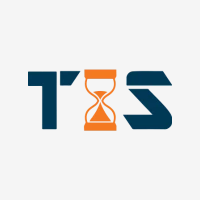
Emre Toptancı
Application Development Team Lead, OBSS Technology
Realizing the cloud app advantage with Emre Toptancı
Have you ever heard of Time in Status, the app that allows you to see how much time was spent on each issue in Jira? Meet the brains behind this wildly successful app on the Atlassian Marketplace that has over 3,000 downloads to date: Emre Toptancı. Long time Atlassian partner and application development team lead at OBSS, Emre has over 15 years of experience writing and architecting software. Emre also plays a customer-facing role helping the users of his apps hands-on.
In this story, we share more about Emre’s path to becoming a successful software developer, his experience on the Marketplace, and understand why he made the decision to to move Time in Status from Server to Cloud. Learn about the benefits he’s reaped from moving to Cloud — and why he’ll never look back.
As of today, our Cloud business is larger and makes more money than the server and Data Center businesses combined, especially in 2021.
Why build apps for Atlassian?
After years of doing software development, I started at OBSS as an Atlassian solution partner, helping customers implement Jira, Confluence and other Atlassian tools. Part of my role included engaging with different types of customers from varying sectors like banking, finance, or insurance. Customers started coming to us saying “I wish Atlassian had a solution that would do X.” That’s when we started building apps to meet their specific needs and then publishing these apps for anyone to use on the Marketplace.
Around this time I decided to move back into developing apps for the Marketplace full time. Currently we have ~15 apps in the Marketplace, and 2-3 top performers, Time in Status being the star of the show.
The turning point
At first, we were hesitant to move to Cloud because an on prem solution is easier: you just give the customer a package to install on their servers. In the Cloud world you build a service and need to keep it up 24/7, so it’s more responsibility.
Once Atlassian started encouraging the transition to Cloud, our customers began knocking on our door asking if our apps supported Cloud. These demands started to accumulate, so we decided to build Time in Status, our most popular app, on Cloud. It took us a few months to re-build the codebase for the Cloud version of the app.
Was making the move to Cloud worth it?
Although we encountered challenges along the way (for example, changing the architecture of the app), moving Time in Status to the Cloud was worth it. As of today, our Cloud business is larger and makes more money than the server and Data Center businesses combined, especially in 2021.
Previously, we didn’t have much insight into customers using our app unless they reached out and contacted us directly. Going live with Time in Status in Cloud gave us the ability to start collecting metrics from the app and silently monitor which features were most used by customers. This was eye opening beyond belief — it’s like we were finally able to see the light.
There were features in Time in Status that I was very enthusiastic about, but it turns out no one was taking advantage of them, either because they weren’t useful or not easily discoverable. On the other hand, there were smaller features that I didn’t think would perform well, but our customers would use every day. Having this level of understanding made a significant change in the direction of our product and allowed us to shift our focus to things that customers actually care about.
Advice on introducing new features to cloud apps
With Time in Status, one thing I wish I had done is follow the “fail small, fail fast” rule vs. concentrating on building an exact replica of the Server version for Cloud. We should have started with an MVP of the app to support a small percentage of Cloud customers, and start by learning from those customers. Trying to hit the bullseye from the start was a mistake and cost us more time.
When introducing new features to your app, the most valuable insights you can gain are through customer feedback. It’s gold. Everything else is secondary. I spend a lot of time on the customer Community looking for new customers who might be willing to provide feedback or who I think could use one of our apps to solve their problem.
Sometimes, I’ll set up a session for a new user to try using my app without any direction and just observe. I ask them to think out loud so I can follow along with their train of thought. This is how I discover where our user interface is weak.
We can’t wait to see what’s in store for you this year, Emre!
We can feel that 2022 is going to be a big year for Emre and the entire OBSS team and cannot wait to see all that they accomplish on the Atlassian Marketplace. If you are a developer who has been debating whether or not you should make the move to Cloud or want to add an incredible developer to your network, we highly recommend connecting with Emre on the developer community.
Share
Meet more Atlassian developers
Multiplier
Learn what it took to launch a business on the Atlassian Marketplace with the support of Atlassian Ventures.
Adaptivist
With the help of Atlassian software, Adaptavist optimizes application lifecycles for enterprises globally.
eazyBI
eazyBI’s easy-to-use visualization and analysis app has been a success. Find out how they scale their business.





